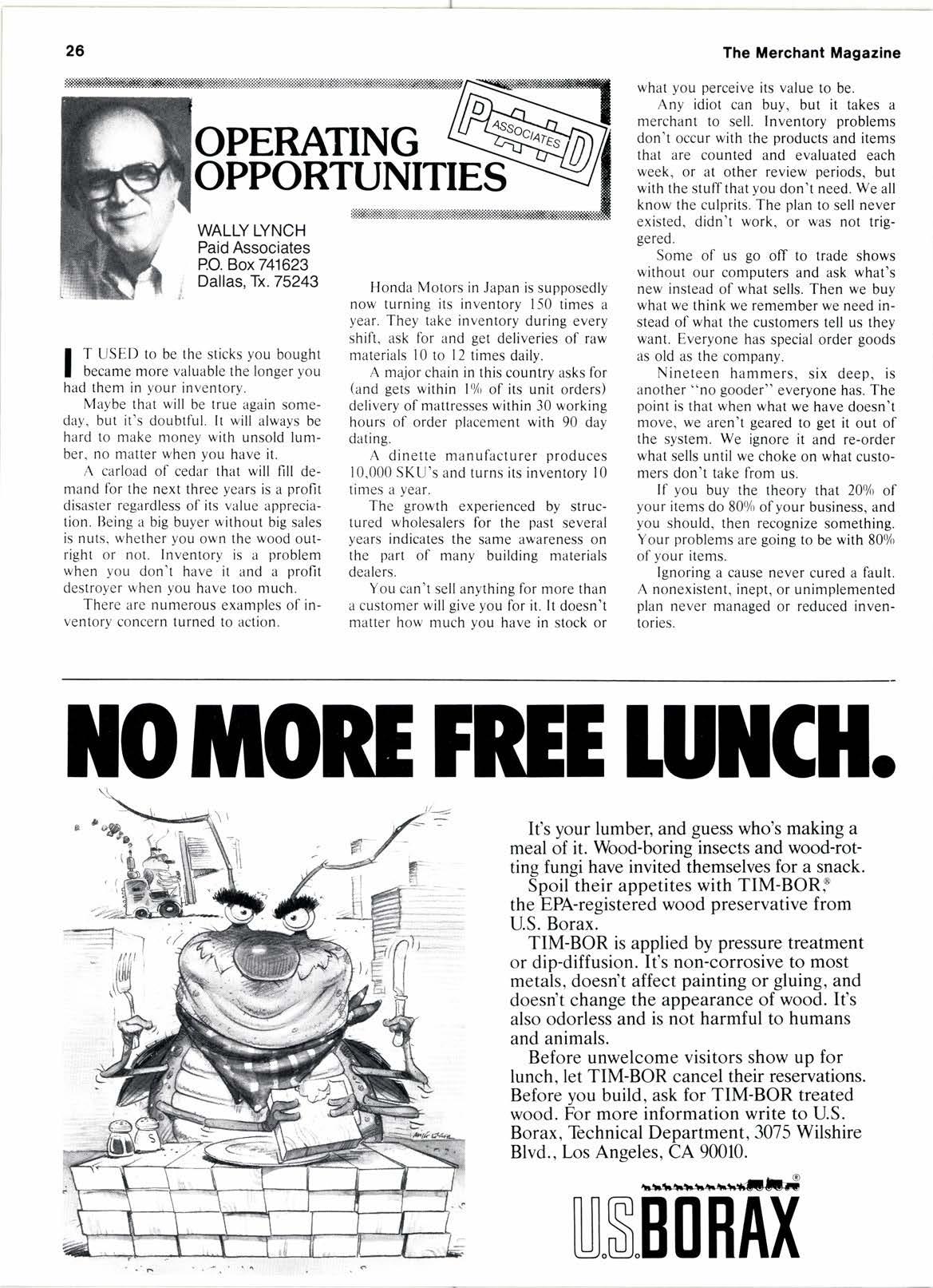
1 minute read
OPERATING OPPORTUNITIES
WALLY LYNCH Paid Associates PO. Box 741623 Dallas. Tx.75243
I T USED to be the sticks you bought I became more valuable the longer you had them in your inventory.
Maybe that will be true again someday, but it's doubtful. It will always be hard to make money with unsold lumber, no matter when you have it.
A carload of cedar that will fill demand for the next three years is a profit disaster regardless of its value appreciation. Being a big buyer without big sales is nuts, whether you own the wood outright or not. Inventory is a problem when you don't have it and a profit destroyer when you have too much.
There are numerous examples of inventory concern turned to action.
Honda Motors in Japan is supposedly now turning its inventory 150 times a year. They take inventory during every shift, ask for and get deliveries of raw materials l0 to l2 times daily.
A major chain in this country asks for (and gets within 106 of its unit orders) delivery of mattresses within 30 working hours of order placement with 90 day dating.
A dinette manulacturer produces 10,000 SKU's and turns its inventory l0 tlmes a year.
The growth experienced by structured wholesalers for the past several years indicates the same awareness on the part of many building materials dealers.
You can't sell anything for more than a customer will give you for it. lt doesn't matter how much you have in stock or what you perceive its value to be.
Any idiot can buy, but it takes a merchant to sell. Inventory problems don't occur with the products and items that are counted and evaluated each week, or at other review periods, but with the stulf that you don't need. We all know the culprits. The plan to sell never existed, didn't work, or was not triggered.
Some of us go off to trade shows without our computers and ask what's new instead of what sells. Then we buy what we think we remember we need instead of what the customers tell us they want. Everyone has special order goods as old as the company.
Nineteen hammers, six deep, is another "no gooder" everyone has. The point is that when what we have doesn't move, we aren't geared to get it out of the system. We ignore it and re-order what sells until we choke on what customers don't take from us.
If you buy the theory that 20% of your items do 800/o of your business, and you should, then recognize something. Your problems are going to be with 80% of your items.
Ignoring a cause never cured a fault. A nonexistent, inept, or unimplemented plan never managed or reduced inventories.










